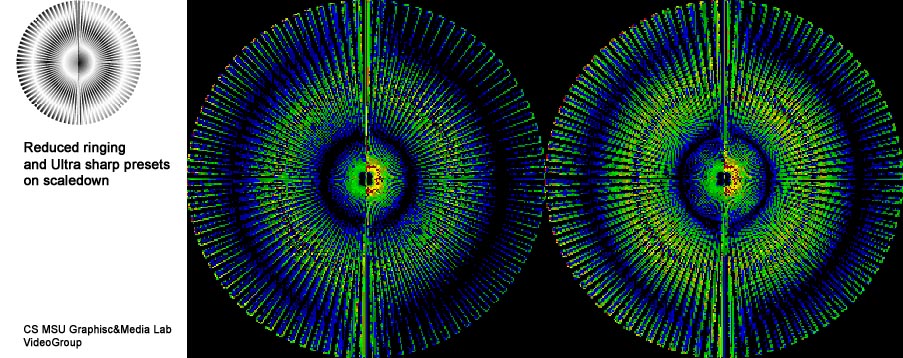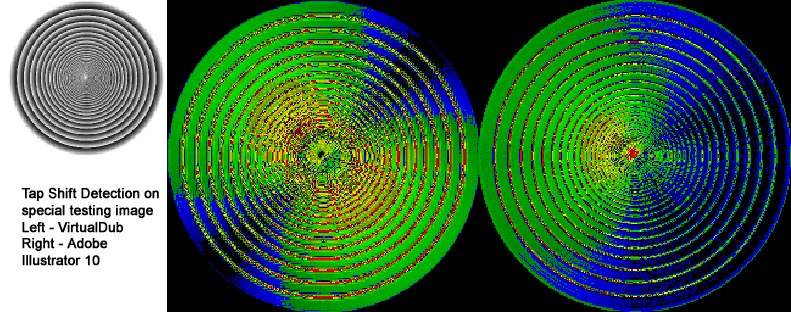High quality image and video resampling
Researchers: Alexey Lukin, Andrey Krylov, Anastasia Koulikova, Dmitriy Vatolin, Sergey Putilin
At the end of October 2002 we have started the project on “High quality image and video resampling”, supported by Samsung Advanced Institute of Technology (http://www.sait.samsung.co.kr/). The project’s goal was to design a new high-quality method for resampling of images and video.
The tasks of the project include:
- Design of resampling method.
- Design and implementation of image quality metrics.
- Design of methods and metrics for evaluation of quality of different resampling algorithms and extensive testing of available resampling algorithms.

Example of resampling of the image (down and up) using different algorithms (last two are our)
Our image resampling algorithm, G&M Lab Impress, has the following advantages over the standard methods:
- High sharpness of resulting images and good anti-aliasing.
- Adjustable ratio between different resampling artifacts (blurriness, aliasing, ringing).
- Absence of sub-pixel shifts in the resulting image.
- “Extra Sharpness” feature for sharpness increase in the process of resampling.
- Possibility of effective hardware implementation.
Several metrics were implemented during the project (including LUV-metrics accounting for Contrast Sensitivity Function). One metric for measurement of image bluring-sharpening can be particularly interesting for future research.

Example of bluring-sharpening metric
Extensive testing of different image resampling algorithms has been performed. Seven “mira” test vector images were created for testing tasks. 9 photos provided by SAIT were also used. These 16 images have been processed using 18 resampling methods, (including methods of well known video-processing tool VirtualDub resampling methods and of Adobe Photoshop 7.0). Totally we have performed more than 1500 measurements for different methods, images and resolutions.

Different resampling methods metric example
These images are obtained by comparison of scaled image with the original image (rasterized from vector image using Adobe Photoshop). Black color stands for no difference. Blue colors stand for slight differences. Green, yellow and red colors stand for more noticeable, significant differences.

Testing image for subpixel shift detection usage
E-mail: video@graphics.cs.msu.ru
Please read MSU filters FAQ before mailing.
-
MSU Benchmark Collection
- Video Colorization Benchmark
- Video Saliency Prediction Benchmark
- LEHA-CVQAD Video Quality Metrics Benchmark
- Learning-Based Image Compression Benchmark
- Super-Resolution for Video Compression Benchmark
- Defenses for Image Quality Metrics Benchmark
- Super-Resolution Quality Metrics Benchmark
- Deinterlacer Benchmark
- Metrics Robustness Benchmark
- Video Upscalers Benchmark
- Video Deblurring Benchmark
- Video Frame Interpolation Benchmark
- HDR Video Reconstruction Benchmark
- No-Reference Video Quality Metrics Benchmark
- Full-Reference Video Quality Metrics Benchmark
- Video Alignment and Retrieval Benchmark
- Mobile Video Codecs Benchmark
- Video Super-Resolution Benchmark
- Shot Boundary Detection Benchmark
- The VideoMatting Project
- Video Completion
- Codecs Comparisons & Optimization
- VQMT
- MSU Datasets Collection
- Metrics Research
- Video Quality Measurement Tool 3D
- Video Filters
- Other Projects
